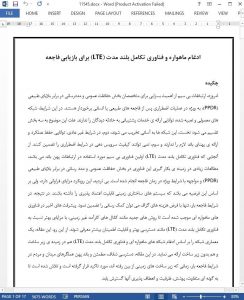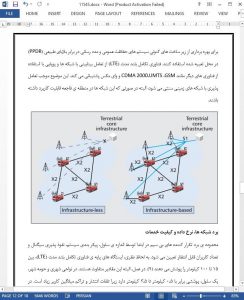Abstract
Wireless communications are critical for public protection and disaster relief (PPDR) professionals during the emergency operations that follow natural or man-made disasters, scenarios in which both commercial and dedicated terrestrial networks often fail to provide the necessary support. The reason is threefold: they simply get destroyed by the disaster, they cannot sustain the sudden surge of network demand or they fail to deliver the necessary bandwidth and/or other QoS guarantees. Because LTE is expected to become the main wireless technology for broadband communication, a lot of studies have been devoted to assess its compliance for PPDR purposes and to find suitable architectural solutions able to meet mission-critical requirements. This approach is surely worthy, but it is based on the assumption that infrastructure-based terrestrial systems are reliable. As a consequence, in worst-case emergency scenarios appropriate guarantees can be provided only in the hypothesis of huge investment costs. Recent developments in satellite technologies are bringing the availability of non-terrestrial high performance channels, with better properties when comparing to LTE for what regards availability and reliability. On this basis, the paper proposes a network architecture based on the integration of satellite and LTE networks for both infrastructure-based and infrastructure-less scenarios. The proposal aims to provide field operators and people in distress with transparent accessibility, coverage guarantees and broadband performance when terrestrial infrastructures are lacking, and to expand their coverage, capacity and resilience otherwise.
INTRODUCTION
Current technologies employed for PPDR purposes provide a rich set of voice-centric services that are of paramount importance for field operators, especially in the very early stages of the response; unfortunately, these systems are unable to sustain high-bandwidth data-oriented applications, for which there is an increasing demand from the PPDR community. Furthermore, due to the generalized lack of a common PPDR communication infrastructure between different PPDR entities (e.g. police corps, fire departments, ambulance services), operators often rely on commercial terrestrial networks for coordination and data-oriented communication [1].
CONCLUSIONS
To address the vulnerabilities of terrestrial infrastructure-based networks in major incidents and disaster scenarios, we proposed a hybrid network architecture that integrates LTE and satellite technologies for PPDR purposes. It is based on deployable mobile units that bring LTE coverage to the disaster area through a satellite backhaul. The architecture is designed in order to provide easy connectivity, extended coverage and high performance guarantees. Furthermore, it allows for both infrastructure-less and infrastructure-based service provision, without requiring extensive configuration. This way, existing dedicated and commercial terrestrial infrastructures can be leveraged, and at the same time sufficient reliability from unexpected events can be provided. We conclude by noting that the proposed architecture has the potential to permit interoperability with legacy cellular technologies, to ease cross-border operations and to provide communication in disasters that include both outdoor and indoor scenarios.











